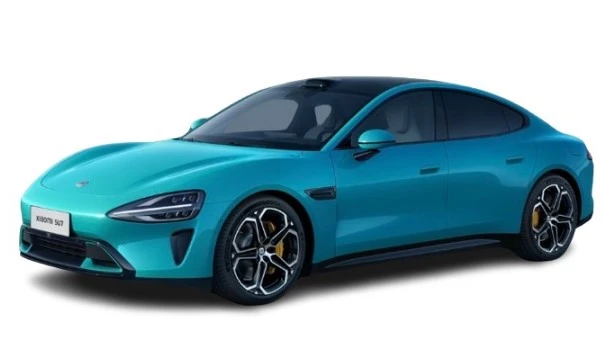Xiaomi made waves at its Xiaomi EV Technology Launch by revealing the groundbreaking Xiaomi SU7, a cutting-edge electric vehicle equipped with five core technologies – E-Motor, Battery, Xiaomi Die-Casting, Xiaomi Pilot Autonomous Driving, and Smart Cabin.
The Xiaomi SU7, positioned as a “full-size high-performance eco-technology sedan,” has been “pre-launched” with a global debut of its design, performance, range, and safety features. The vehicle aims to redefine the boundaries of performance, ecosystem, and mobile smart space in the electric vehicle sector.
1. E-Motor Breakthroughs
Xiaomi showcased its HyperEngine V6/V6s and HyperEngine V8s E-motors at the launch. HyperEngine V8s, with a record-setting maximum speed of 27,200 rpm, sets new industry standards.
Its advanced cooling design and unique silicon steel laminations contribute to its remarkable performance. The HyperEngine V6 series also leads the industry with a rotational speed of 21,000 rpm, surpassing mass-produced electric motors globally.
2. Innovative Battery Technology
Xiaomi’s CTB Integrated Battery Technology, featuring Inverted Cell Technology, elastic interlayer, and minimalistic wiring system, achieves a battery integration efficiency of 77.8 percent — the highest worldwide for CTB batteries.
The battery boasts a 24.4 percent overall performance improvement, a height reduction of 17mm, and a maximum capacity of 150 kWh. Safety measures include a 14-layer protection system and advanced heat dissipation techniques.
3. Revolutionary Xiaomi Die-Casting
Xiaomi introduced the self-developed Xiaomi Die-Casting T9100 cluster and proprietary alloy, Xiaomi Titans Metal. This advancement significantly streamlines production, reducing welded joints, overall car weight, and production hours. Xiaomi’s material research resulted in a high-strength, high-resilience die-casting material, Xiaomi Titans Metal.
4. Pioneering Xiaomi Pilot Autonomous Driving
Xiaomi leads in autonomous driving with three key technologies: Adaptive BEV Technology, Road-Mapping Foundational Model, and Super-Res Occupancy Network Technology.
These innovations ensure wider visibility, real-time road condition recognition, and accurate obstacle recognition. The system, equipped with top-of-the-line configurations, is set to join the industry’s top echelon by 2024.
5. Smart Cabin for Ultimate User Experience
Xiaomi’s Smart Cabin adopts a “human-centric” interaction architecture, featuring a 16.1-inch 3K central console, a 56-inch HUD head-up display, and a 7.1-inch rotating dashboard.
The in-car chip Snapdragon 8295 provides AI computing power, enabling seamless connectivity and a user-friendly experience. The Smart Cabin integrates mainstream applications, supports over 1000 Xiaomi smart home devices, and fully embraces the CarIoT ecosystem.
Xiaomi SU7: A Dream Car for the New Era
The Xiaomi SU7, representing the “trinity” dream car, positions itself as a high-performance eco-technology sedan, aiming for high performance, eco-technology capabilities, and a comprehensive mobile smart space experience.
With a zero-to-hundred acceleration of 2.78 seconds and top speed of 265 km/h, the Xiaomi SU7 Max joins the “sub-2-second supercar” club. Its Smart Multidimensional Sensing and Global Synchronized Control capabilities ensure a stable and smooth driving experience.
Completing the “Human x Car x Home” Smart Ecosystem
Lei Jun announced that Xiaomi’s strategic focus has transitioned to the “Human x Car x Home” smart ecosystem, with Xiaomi EV completing the ecosystem.
The integration of people, cars, and homes allows seamless connectivity, real-time coordination, and collaboration among industry partners.
Xiaomi HyperOS, with over 200 product categories, empowers the ecosystem, ensuring a human-centered, inclusive, and collaborative future.
Xiaomi’s automotive goal is to create a smart electric vehicle where driving becomes intuitive, representing the fusion of technological breakthroughs and user-centric integration.
